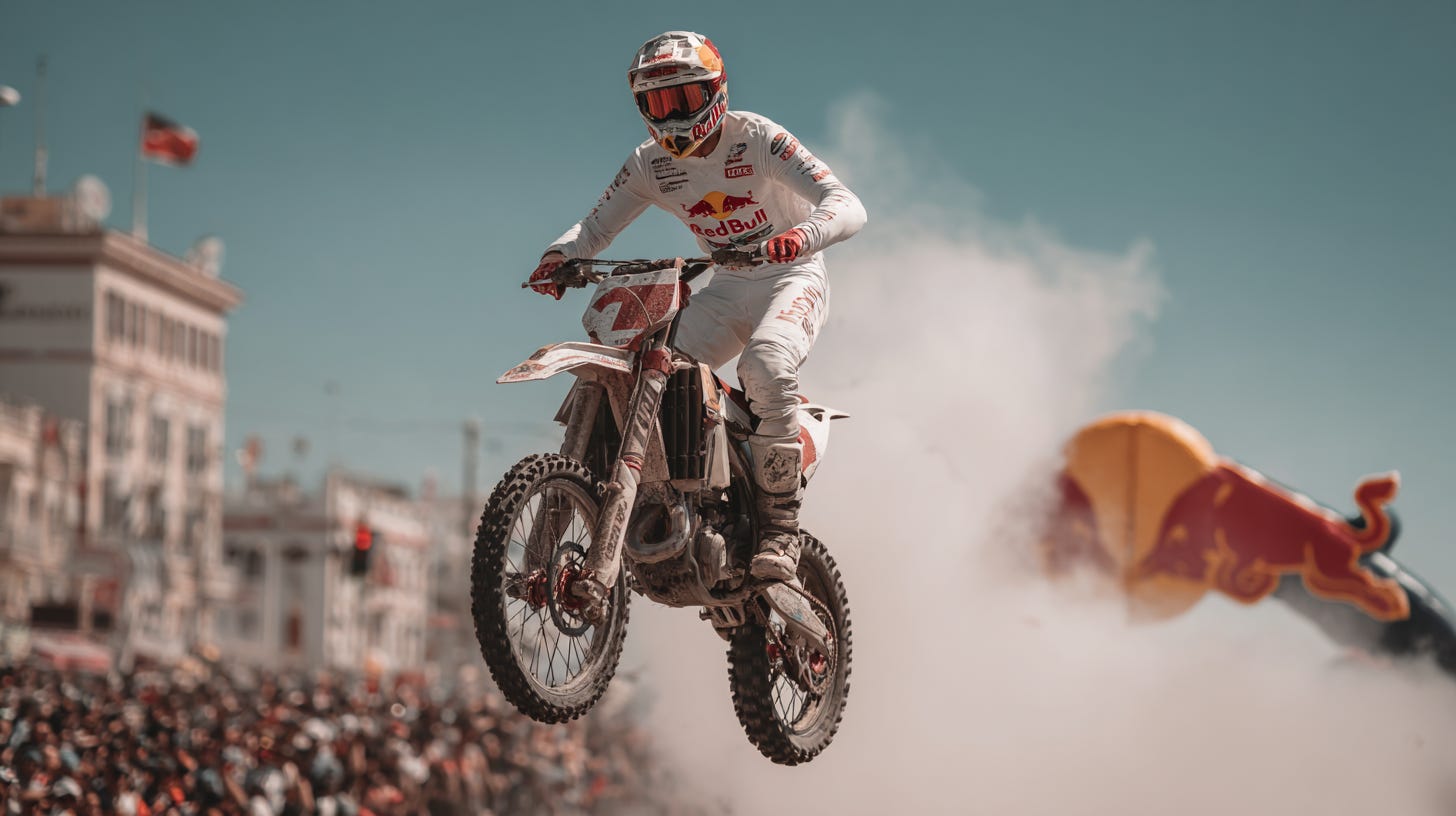Brand Snapshot: Is Red Bull Still Relevant?
We ran a snapshot analysis on Red Bull, here is what our Brand Relevance Snapshot came up with.
A Brand Relevance Snapshot by Original Minds Intelligence™
To get a free Snapshot on your brand, email or DM us.
In Brief
Once the jet-fuel of hustle culture, Red Bull is now flying into headwinds. The world’s changing fast: wellness over chaos, focus over frenzy, identity over icon. Red Bull still dominates energy drinks globally (in 2022, it had a 43% share of its category), but shifting culture, audience expectations, and competitive innovation are asking a simple question: Do their wings still fit today’s terrain? If the brand doesn’t evolve its meaning—as much as its marketing—it risks becoming the icon of yesterday. That is, if we look at the Five Vectors Of Brand Relevance™ - our model.
1. World Vector – Contextual Forces
The global scene is recalibrating. The functional beverage market is ticking up: in 2024, functional drinks (including energy) grew 8% in value, reflecting rising demand for wellness-enhanced formats. Euromonitor Yet the very notion of “energy” is being redefined—from high-octane adrenaline to sustained focus, cognitive clarity, and recovery. Regulatory and health pressures are increasing on high-sugar, high-caffeine formats.
Key question: Does Red Bull’s message align with this new world where clean, meaningful energy matters more than blunt force?
2. Culture Vector – Meaning & Morality
Red Bull built its brand on extremes: skydiving, cliff diving, fearless stunt-driven content. But culture is shifting. Younger consumers (Gen Z in particular) are rejecting the “always on” hustle myth and embracing balance, rest, and meaningful performance. If your brand still bangs the drum of “more, faster, louder,” you risk sounding not cool—but outdated.
Key question: Is Red Bull’s culture story resonant with those who value wellness and intention, or just chasing the same adrenaline era?
3. Market Vector – Competitive Dynamics
Yes, Red Bull remains a global powerhouse. Multiple sources suggest a ~43% global energy drink market share in recent years. Cascade But growth is no guarantee of future relevance. Competitors are repositioning “energy” via wellness, cognition and purpose: brands like Celsius emphasize clean ingredients, hydration-driven clubs, and gym culture; others emphasise adaptogens, nootropics, or functional fizzes. If you lead a category, you also become the category—and in commoditised categories, leading can feel stagnant.
Key question: Is Red Bull improving what “energy drink” means, or just defending what it already means?
4. Customer Vector – Desire & Decision
Consumers decide based on the relevance of a brand: does it reflect them, their values, their goals? Younger consumers are more likely to reach for beverages that serve cognitive or wellness-aspirational needs than mere jolts. In the U.S. functional‐beverages market, energy drinks lead with $16 billion of the ~$50 billion category. Glanbia But that doesn’t mean the brand is automatically relevant to all segments. What worked for “party, adventure, extreme” may no longer align with “focus, wellness, clarity.”
Key question: Does Red Bull make younger, wellness-driven audiences think “that’s for me,” or does it still sing the adrenaline tune of their older siblings?
5. Brand Vector – Expression & Energy
One of the world’s most recognisable brands—yes. The slim blue-and-silver can, the slogan, the wings myth—they still carry weight. But everywhere we look, brand expression is evolving: creators, meme culture, rapid content, participatory rituals replace polished stunts. If your brand looks like it’s still caught in the 2000s stunt loop, you risk being seen as legacy rather than living.
Key question: Is Red Bull’s brand expression evolving fast enough to remain culturally fluent—and not just historically iconic?
Relevance Rating (2025 Snapshot)
VectorStatusRiskWorldTrending but mis-matchingGlobal DriftCultureIconic but ageingCultural DissonanceMarketStrong shareCategory StagnationCustomerLoyal coreMis-fit with youngerBrandHighly recognisedInertia in expression
Overall verdict:
Red Bull remains massively visible but is at risk of growing less relevant. It’s strong in category, but weaker in cultural motion and future-proofing. If the brand rests on legacy rather than reinvention, the wings might still exist—but the flight path may need recalibrating.
Opportunity Questions for Red Bull
Re-define energy: Broaden the concept from pure adrenaline to smart energy—focus, clarity, recovery.
Update the mythos: From daredevil to do-gooder – creators, culture builders, makers not just thrill-seekers.
Modernise expression: Move beyond stunts to moment-driven, participatory formats suited to Gen Z and digital culture.
Or, would these moves actually kill the brand?
Join in on the conversation.
P.S We measure The Relevance Gap™ - the measurable degree of misalignment between what your brand offers, what customers now value, what the market provides, how culture is shifting, and how the world is changing.
When that gap widens, you lose the only thing that matters: customer choice. And increases in choice (or decrease) can be measured in dollars, euros, pounds, or yen (or whatever you prefer).
For this example, we only did a “quick and dirty” snapshot without any brand inputs. In our real audit, we measure everything from brand position to marketing, product, service, and much more.
Sources
“Innovation and functionality drive global soft drinks market to USD 1.1 trillion” – Euromonitor, June 2025. Euromonitor
“The Ultimate Red Bull Marketing Strategy Study” – Cascade, December 2023. Cascade
“US Functional Beverage Market Insights 2025” – Glanbia/Nutri-Knowledge Center, February 2025. Glanbia
Euromonitor “Energy Drinks in the US” overview, Aug 2025. Euromonitor



